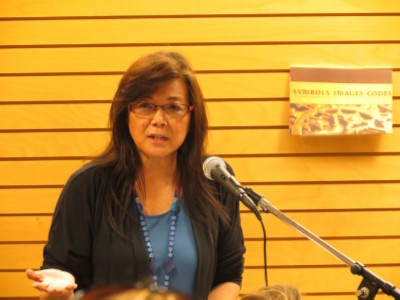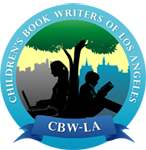Summary:
Whether your project is a novel, short story, or script for film, television or the internet, the Children’s marketplace is an exciting arena for writers. But once you’ve completed writing your project, what are the next steps you should take before submitting your work to a publisher, editor, agent, producer or studio?
There are a lot of myths out there about how to become successful. One thing we do know is that following the myths can enrich your stories. Everyone agrees that success requires a bit of magic, both in your marketing and in your stories. The madness is just an integral part of the marketing, but if you know what’s ahead you can better navigate the choppy waters of the Children’s marketplace for books, films, tv series, and web series.
Last night, we gathered at Barnes & Noble 3rd Street Promenade for another wonderful workshop facilitated by two of Hollywood’s top screenwriting consultants.

Authors/Speakers Kathie Fong Yoneda and Pamela Jaye Smith
with Barnes & Noble Events Manager Shane
Published authors and veterans of the entertainment industry, Pamela Jaye Smith and Kathie Fong Yoneda presented their individual Top10 challenges that all writers must face in order to successfully conquer the “myth, magic and madness” of writing for children today.
Pamela Jaye Smith discussed the use of myths and symbols as a way to deepen the layers of our stories. She discussed ten important questions for us to ask ourselves as we develop or revise our short stories/novels/scripts:
1. Have I aligned my story with a universal Mythic Theme?
2. What is the Archetype for my Protagonist – is it clear and yet unique?
3. What is the Archetype for my Antagonist – is it clear and yet unique?
4. Have I aligned both Protagonist and Antagonist with an identifiable but not stereotypical Inner Drive [chakra] and how do they differ from each other?
5. How does my Protagonist change and grow, as expressed by their arc from one Inner Drive [chakra] to another?
6. What internal problems does my Protagonist have?
7. What external dangers must my Protagonist overcome?
8. Is my main symbol expressing an emotion, a situation, or a concept?
9. Is there a symbol for the Protagonist and one for the Antagonist?
10. Have I layered my story with related and age-related symbols?

Author Pamela Jaye Smith
Pamela taught us that symbols are primarily used for three things:
1. To express emotion (emotional)
2. To tell us something about the situation (physical/situational), and
3. To show a concept (if your story about freedom, love, etc)
As humans, we’re built to grasp the meaning of symbols. Symbols are universal, and timeless and if we work them into our stories, we’ll be plugging into that deeper mythical and psychological part of our readers.
Pamela gave us some great examples of how myths and symbols are put to great use in popular children’s books and movies. One of the examples she gave was Harry Potter’s lightning scar. Lightning, linked to mythological gods such as Thor, and Zeus, has long been a symbol of the connection between the deities and humanity, heaven to earth.
JK Rowling’s decision to put a lightning scar on Harry’s forehead implies so much more, and is a more effective symbol of his character than say a circle or a dot on his forehead.
Another example Pamela gave was the use of the mirror symbol in Alice in Wonderland. The mirror symbol represents the concept of duality of the world. On a situational level, it symbolizes that Alice is now in a world where things are in reverse; and on an emotional level, it symbolizes Alice looking into herself to find out who she really is.

Author Kathie Fong Yoneda
Kathie Fong Yoneda posed her own 10 Question Challenge for writers, based on her book THE SCRIPT-SELLING GAME.
1. Are my characters well-drawn and interesting?
2. Does my dialogue add to the personality of each character and support the plot points of my story?
3. Does my story fall within a general 3-act structure?
4. Does each scene/segment have a distinct purpose for being included?
5. Have I paid attention to details by doing proper research?
6. Do I know who my target audience is?
7. Have I streamlined my storytelling?
8. Can I summarize my story in one or two sentences?
9. Is my completed work in professional form?
10. Is this a story that I love?
Kathie reiterated the importance of well-drawn secondary characters. An editor Kathie spoke with one day, mentioned that the one of the common downfalls of a book is that the secondary characters are weak and not memorable. Where would Luke Skywalker be without Han Solo or Darth Vader, Ariel without Flounder and Sebastian.
Harry Potter had his friends Ron and Hermione. Although all of them went to the same school, they have very different ways of approaching the same problem. Having three different mindsets made a good blend. It gave the whole story a sense of vitality and energy because of different types of people solving the same problem together.
Kathie also reminded us of the importance of dialogue, and of having each character have their own voice. In Screenwriting, they have this technique were they cover up the names of the characters, and they try to guess who’s speaking to make sure the dialogue is consistent with the personality of the character.
After Kathie’s talk, she joined Pamela at the table and they both talked about the madness of writing, and answered questions from the audience. They discussed the common mistakes writers commit when submitting their queries or manuscripts to agents and editors, and what to do to avoid them. They even gave us great ideas on how to take our writing to the next level, by using the trans-media approach. They reminded us that novels aren’t the only creative outlet we have. Apps, web series, screenplays and other media are all available for us to use.

CBW-LA Officers with Authors Pamela Jaye Smith & Kathie Fong Yoneda
The workshop was a definite success. Kathie and Pamela did a great job of challenging us to create better stories that will stand the test of time.





